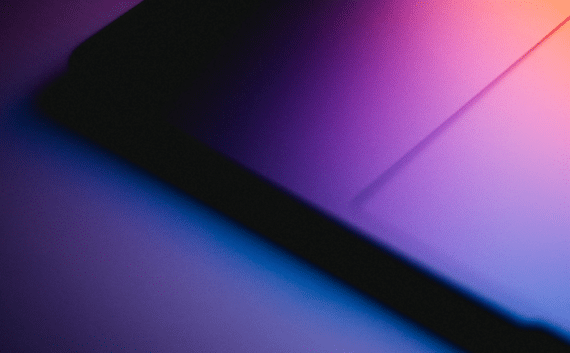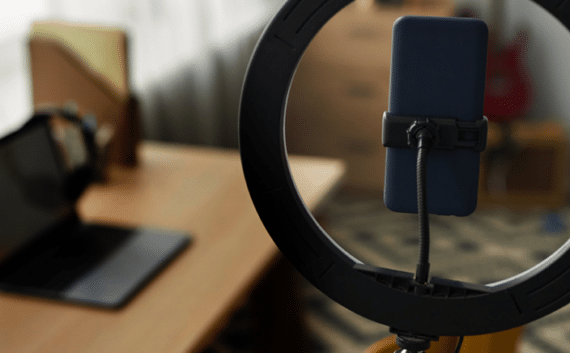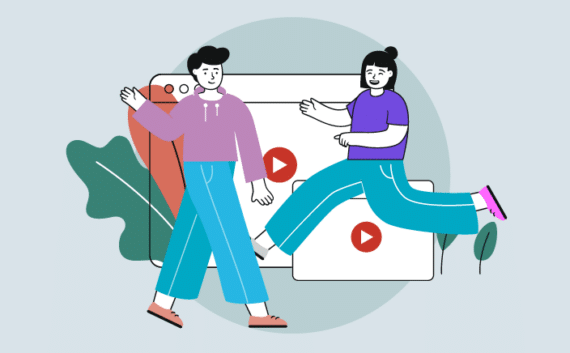
If you’re new to social media advertising, you’d be forgiven for thinking that Facebook Ads and boosted posts are the same thing. However, there are considerable differences between the two and it’s important to know which option is most appropriate for your brand to use and when. So if you’re not sure where to start, we’ve broken down the key differences - and pros and cons of each.
What are Facebook ‘Boosted Posts’?
A ‘boosted post’ is simply a timeline post on your brand’s Facebook Page that you can put money behind to reach more users than you would organically. When you consider that the average organic Facebook Page reach is sitting around 5.2% as of late-2020, boosting your post ensures that the social content you’ve put hard work into is more likely to be seen by users across Facebook.
How do you boost a post on Facebook?
To boost a post on Facebook, simply visit your Facebook Page and click the blue “Boost Post” button below the post. Then there are a couple of brief campaign settings to choose from:
-
Goal
This lets you decide what kind of results you want to achieve from the post. Choose from either ‘Engagement’ (to prioritise showing ads to people who are more likely to react, comment or share your post) or ‘Website Visitors’ (to prioritise showing ads to people who are more likely to click the link in the post) or ‘Automatic’ (to let Facebook decide for you).
-
Audience
From here, you select who you want to see the post based on certain qualities, such as age, gender, location, interests or behaviours. You can also target people who already like your page and their friends. More recently, Facebook has now introduced the ability to target custom audiences with boosted posts as well – so you could remarket to website visitors, lookalikes or target a specific customer list.
-
Duration
Then you set how long you’d like the boost to run, either in days or set an end date. This can be helpful for a time-sensitive call-to-action – just remember that the longer the duration, the harder your budget has to work to deliver results. Facebook recommends a minimum of four days.
-
Budget
You can then set a lifetime budget, with a minimum spend of $1.34 per day. This is good for cost control and budget plans so that you can set a max spend per post. Facebook will also provide you with an estimated reach based on the budget and duration you’ve set.
-
Placements
Lastly, you can pick where you’d like your boosted post to show, either on Facebook, Instagram or in Messenger – or all of the above.
Once your settings are complete (and your credit card is connected to your account), you are ready to boost your post! In the past, the boosted post functionality was fairly limited in terms of campaign settings, with less specific targeting capabilities and no ability to select specific channels, so over the past few years the offering has definitely been expanded.
The idea of boosted posts is to provide an easy, user-friendly way to post ads. If brands do not have the time or resources to tackle Ads Manager, boosted posts can be a great solution. However, this also comes at the cost of the more powerful features available with Facebook Ads and Ads Manager.
What are Facebook Ads?
While a boosted post is technically an ad, ‘Facebook Ads’ are created in Facebook’s Ads Manager, where you can utilise more advanced customisation and achieve more significant optimisation opportunities. In Ads Manager you can optimise ads towards engagement and website traffic (as with boosted posts), but you can also optimise for app installations, video views, website conversions and more. Like boosted posts, Facebook Ads can still be highly cost-effective given the substantial user base and advanced targeting capabilities.
Facebook Ads vs. Boosted Posts
Choosing between Facebook ads and boosted posts will largely depend on your brand’s objectives and resources (both time and money). While Facebook Ads is a much more comprehensive and typically efficient solution, it requires more hands-on involvement in the campaign creation and management. Boosted Posts on the other hand are typically going to produce a more expensive outcome, but it’s convenient and easy-to-use.
Advantages of using Facebook Ads instead of boosted posts
-
Advanced Audience Targeting
Although boosted posts have now stepped it up with custom audience targeting, there are far more detailed targeting opportunities available through Facebook Ads. With multiple ad sets within a campaign, you can overlap multiple audiences, narrow down your audience to a specific segment, as well as apply exclusions to either further segment your audiences, or ensure that a specific group of people do not see your ad (like those who’ve already converted, for example).
-
Better Placement Opportunities
While you can select which channels your boosted post shows – either in Facebook feeds, Instagram feeds or Messenger – this is about as much control as you have over where your ad shows.
With Facebook Ads, you can select different placements per ad group – so in the same campaign, you could ensure a certain group of ads are only shown in video feeds, while others only show on Instagram stories, with all sorts of combinations in between. -
Ad Scheduling
A huge limitation to boosted posts is the inability to schedule your boosts in advance. The post must be live on the Facebook page first, then you are able to boost it. This can become time-consuming as you manually boost each post as it goes live and may not be a sustainable practice moving forward. With Facebook Ads, you can set your advertising schedules in advance. You can also either create an ad or use an existing pre-published or published post from your Facebook Page as an ad. Additionally, when you boost a post, you are limited to showing the ad for a certain number of days from the time of posting and the post will show to users at any time of day, any day of the week during the boosted schedule. With Facebook Ads, you can ‘daypart’ your ads, which means you can set a schedule to turn ads on and off throughout a specified time frame that suits your strategy.
-
More Specific Ad Objectives
On boosted posts, you are limited to engagement and traffic-based objectives, whereas with Facebook Ads, there are numerous campaign objectives to optimise towards based on your specific goal, such as reach, awareness, app installs, video views, lead generation, messages, catalogue sales, store visits and conversions. Facebook’s intelligent machine learning delivers your ads to users who are most likely to interact with the ad based on the objective and drive the best result.
-
Conversion Campaigns and Custom Conversion Tracking
A big advantage of Facebook Ads is conversion objective campaigns. This means you can target users who are more likely to click through to your site and complete a desired action, such as completing a form, making a purchase, or booking an appointment. By optimising towards conversions, your delivery costs decrease and average conversion rates increase. Further, if you have multiple forms, you can set up custom conversions based on page or event, so you can be even more precise with your optimisation strategy.
-
Multiple Creative Variations
The major difference between boosted posts and Facebook Ads is that you can only ‘boost’ a single post with one targeting setup. With Facebook Ads, not only are you able to target multiple audiences with multiple objectives simultaneously, but you can also use multiple ad variants with different image creative, ad copy and headlines to test what resonates best with your audience. Boosted posts are also limited to the post content (i.e. image or video with copy), whereas Facebook Ads can be enhanced with headlines, descriptions, call-to-actions buttons and create carousel ads.
There’s even dynamic ad capability where you can upload multiple images, copy and headline variants and let Facebook dynamically serve the best ad combination to your audience based on machine learning.
To boost or not to boost?
To put it lightly, unless you are running a one-man marketing show, even the smallest of teams are better off leveraging the potential of Facebook ads through Ads Manager. Facebook advertising is most valuable when you take advantage of its precise targeting and manual optimisation opportunities, and there are too many advantages to the platform to not make the most of it.
But if you’re not quite sure where to start, or which audiences you should be targeting, give us a call. NOUS has in-house experts in digital advertising who will help you to reach the right customer, with the right message, at the right time.
Get in contact with us at [email protected] or call 07 3003 0722.





